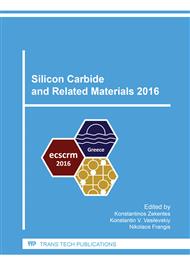p.685
p.689
p.693
p.697
p.701
p.707
p.711
p.715
p.719
SiC Power Devices in Impedance Source Converters
Abstract:
This paper discusses issues related to application of SiC power devices to new family of power converters. Impedance source converters show unique feature, buck boost characteristics due to specific impedance network. Passive elements of this network may be seriously reduced with the switching frequency increase, possible with fast-switching SiC transistors. On the other hand, switching conditions of the power devices are more severe than in traditional voltage-source or current-source converters. These issues are discussed on the base of the 6kVA/100kHz quasi-Z-source inverter example.
Info:
Periodical:
Pages:
701-704
Citation:
Online since:
May 2017
Authors:
Price:
Сopyright:
© 2017 Trans Tech Publications Ltd. All Rights Reserved
Share:
Citation:


